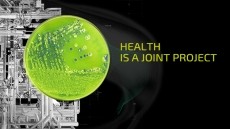Pharmaceutical industry biding its time on RFID adoption
investment constitute the biggest barrier to adoption of radio
frequency identification (RFID) in the pharmaceutical industry, the
lack of a frequency standard runs these factors a close second, a
new report has found.
"While many pharmaceutical companies are eager to begin their RFID pilot work, we're seeing a freeze on project funding until an item-level frequency standard is established," says report author Eric Newmark, senior research analyst at IDC company Health Industry Insights.
"Evaluations are being hindered by corporate fear of investing in the wrong infrastructure."
Despite predictions of an RFID explosion in healthcare, with consultants IDTechEx forecasting that the global market for tags and systems will rise from $90m in 2006 to $2.1bn in 2016, a survey of 143 life sciences industry leaders by Health Industry Insight reveals that fewer than one in five (16 per cent) pharmaceutical companies are currently evaluating the benefits of RFID technology.
Moreover, 75 per cent of those evaluations are carried out on an annual budget of less than $50,000.
Even fewer companies (15 per cent of those polled) have actually adopted RFID, with 13 per cent doing so to a limited extent and only 3 per cent characterising their embrace of the technology as "widespread adoption".
The average life science company investment in RFID is around $25,000, although the survey respondents believe this figure will jump to $75,000 over the next 12 months.
As Newmark notes, a number of reasons are commonly cited for the slow uptake of RFID in the pharmaceutical industry, despite the encouragement of the US Food and Drug Administration (FDA) and the support of industry associations.
These include concerns about the available level of read rates, security and privacy issues, orientation sensitivity, encode speeds, read ranges and the need for an actual FDA mandate.
Yet technology costs/ROI and infrastructure investment are still the main impediments to adoption.
"Drug safety is a noble cause, but it doesn't pay the bills, so companies await further financial results to be released surrounding the major initiatives underway at Pfizer, GlaxoSmithKline, Purdue and others," Newmark comments.
The second biggest hurdle - reluctance to commit to infrastructure investment - stems from the ongoing debate about the relative virtues of high-frequency (HF) and ultra-high frequency (UHF) radio frequency identification for item tagging.
Where the pharmaceutical industry appears to sit in this debate is firmly on the fence.
asked by Health Industry Insights which frequency would ultimately become the item-level standard for tracking medicines, 88 per cent of respondents opted for "don't know".
Just 6 per cent selected the currently cheaper UHF, 4 per cent HF and another 2 per cent near-field UHF.
According to Newmark's report - called Item-Level Tagging: Moving Beyond the Frequency Dilemma - both 13.56 MHz high-frequency and 915 MHz ultra-high frequency tags promise much for pharmaceutical applications, although each has its unique benefits.
A cost advantage is often cited for UHF tags although Health Industry Insights' research suggests that, at high volumes, UHF tags will be less than $0.01 cheaper than their HF counterparts.
Advocates of high-frequency RFID claim tighter security (due to a shorter read range) and higher readability, specifically around metals and products containing liquid.
One factor which might swing the market behind HF is that the frequency has been globally harmonised, while the less mature UHF technology operates on different frequencies from country to country, limiting economic efficiencies.
That said, both frequencies are being used at item level by pharmaceutical manufacturers and distributors such as Purdue (UHF), Cardinal (both UHF and HF), Pfizer (HF) and McKesson (HF).
Eavesdropping concern Another concern that figured strongly in the Health Industry Insight survey was security and privacy.
Even though tags will contain only a licence plate identifier, with more detailed information stored in a protected database, there are still security gaps, Newmark observes.
Electronic Product Codes "are logic-based, with sections of numbering that designate both the manufacturer and the drug type, so it is not difficult to decipher what licence plate serial numbers signify", he comments.
Assuming that RFID tagging eventually extends to the patient/consumer level, it would be very easy, he suggests, for someone with a reader to walk past a customer in a pharmacy aisle and identify the prescription they were carrying.
Alternatively, someone from a rival retailer could use a pocket reader to scan medicines on a daily or weekly basis and check how products are turning over.
This is another argument for shorter read ranges on tags in the pharmaceutical sector, although shorter ranges alone will not fix the problem, the report notes.
Newmark's advice to pharmaceutical companies hanging on for an item-level frequency standard is to go ahead with their evaluations using whichever frequency they feel will deliver the best results.
As an industry mandate for a particular item-level frequency is unlikely, the risks of investing in the wrong infrastructure are minimal, he believes.
Frequency-specific hardware costs are only about 10 per cent of total RFID spend.
A more feasible scenario is that the vendors behind competing RFID frequencies will "agree to disagree".
Implementing a universal RFID frequency "is actually in everyone's best interests" , and both distributors and retailers should be moving in that direction, Newmark says.
Most barcode readers have built-in intelligence for several algorithmic reading methods, he points out.
The incremental cost of building a dual-frequency network is "insignificant in comparison with the potential returns that widespread RFID adoption will bring, not only by means of increased drug safety but more specifically through leaner distribution and improved chargeback and returns processes", the report comments.


















